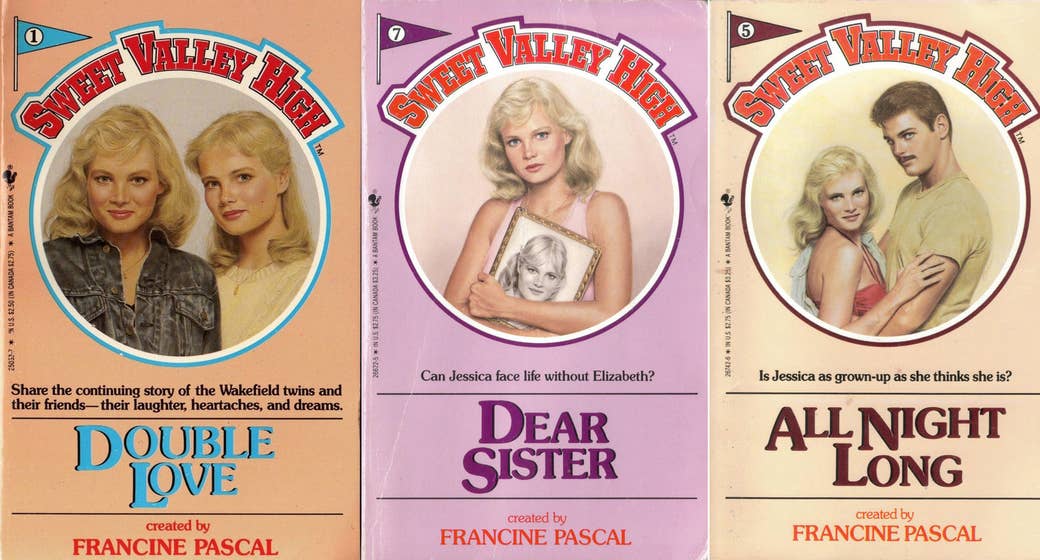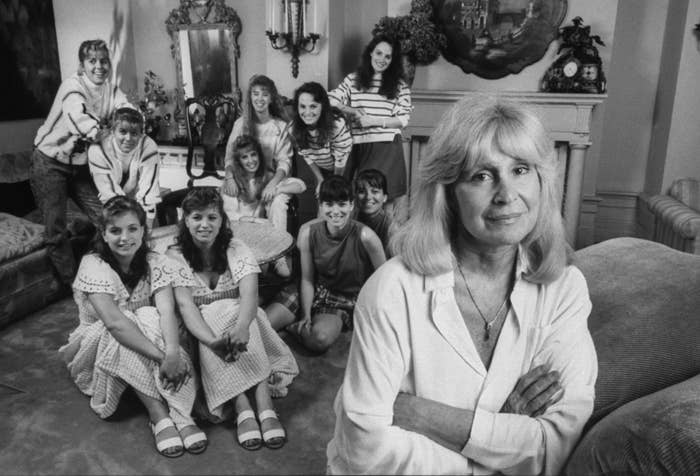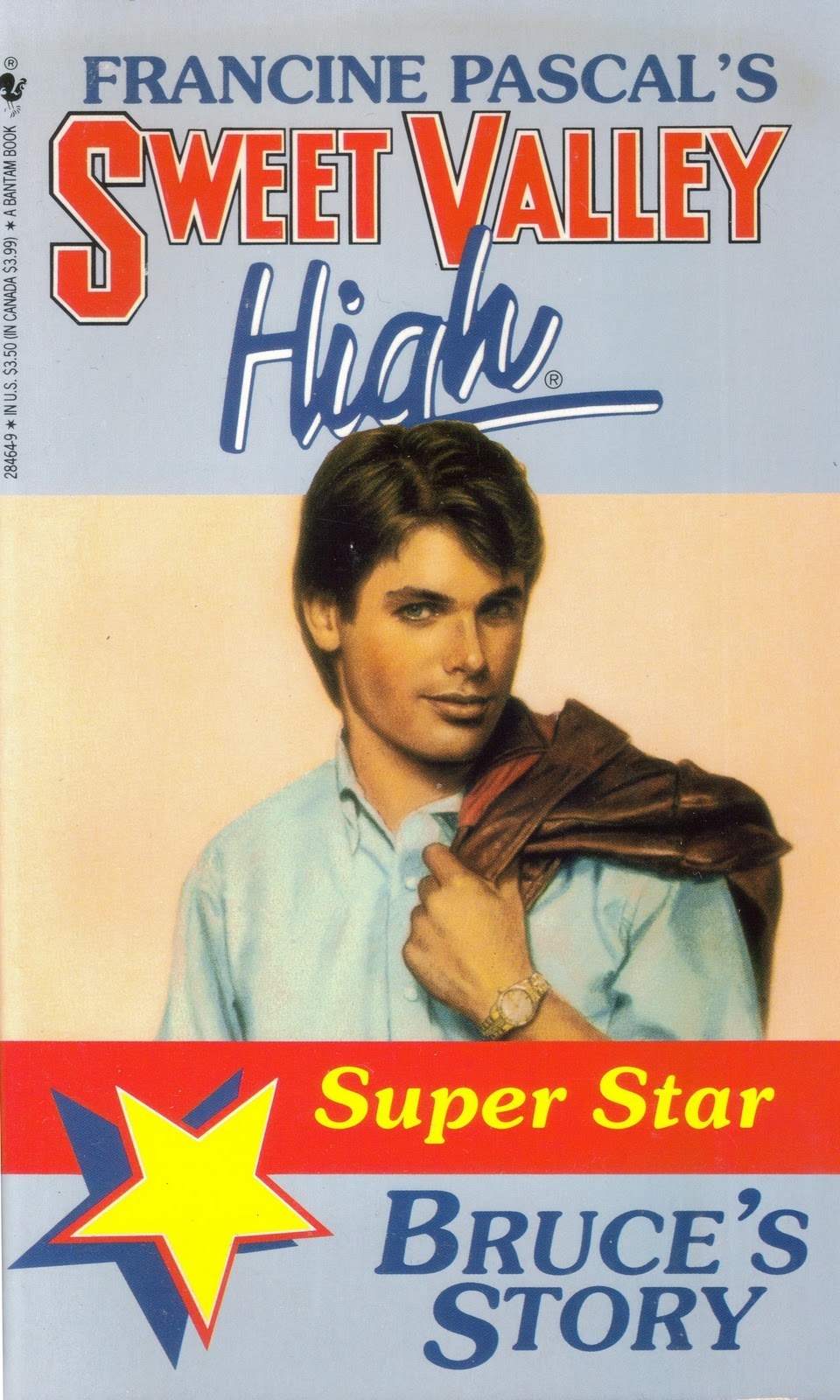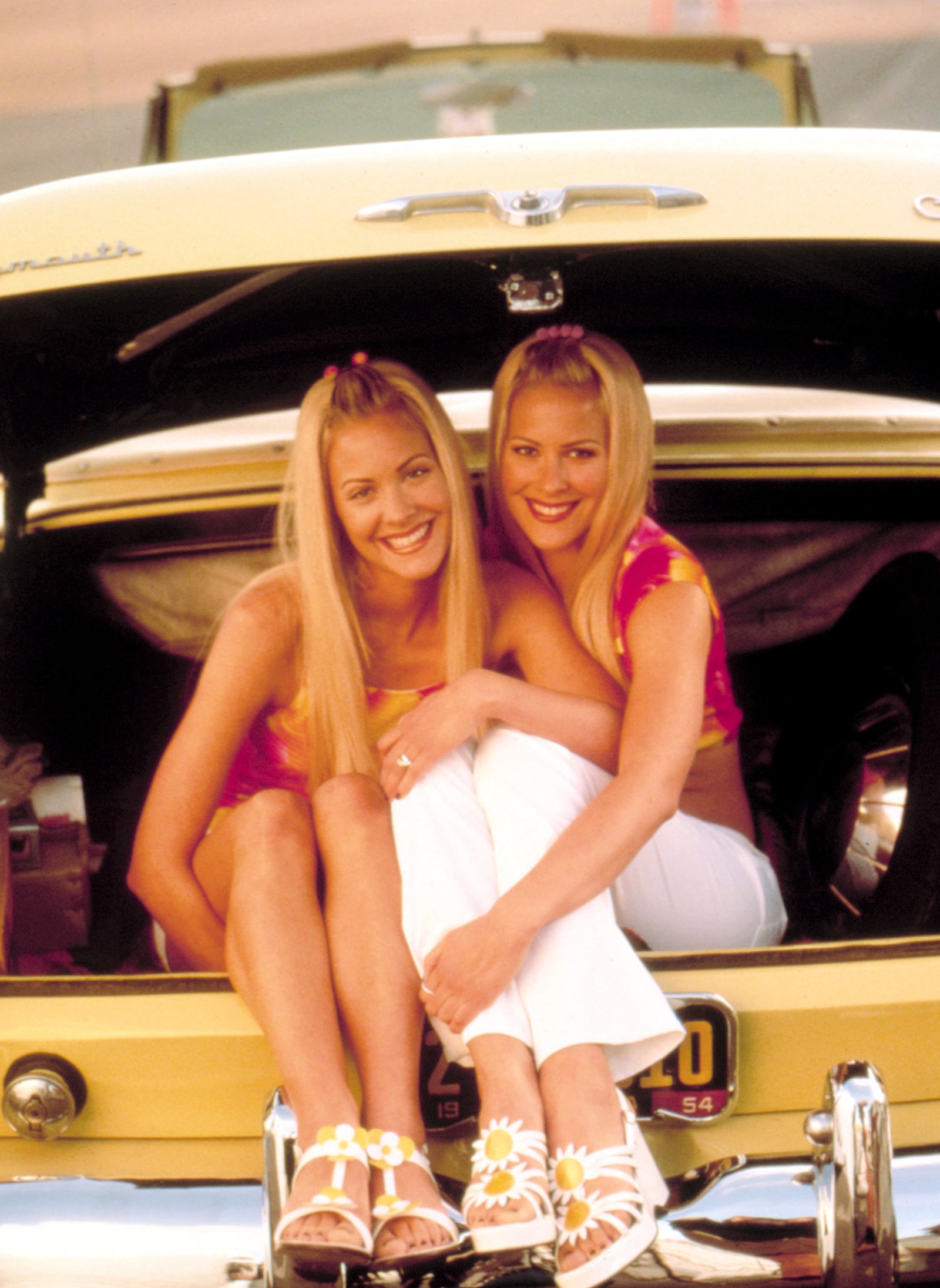
Last night I dreamt I went to Sweet Valley again.
I dreamt I went to high school with Bruce Patman, Lila Fowler, Todd Wilkins, and of course, the most important fictional twins of my young life, Jessica and Elizabeth Wakefield. I dreamt I knew those twins — identical in every way, right down to their perfect size-six figures, honey-blonde hair, and aquamarine eyes. At one point in my life, I thought about these twins and the assorted all-American boys and girls that made up their high school class as often as I did anything of significance in life. The novelistic tales of the Wakefields and their frenemies, pals, and rivals were interwoven with the fabric of my own real life in a way that felt close to irreversible. My school transcripts might suggest otherwise, but I know in my heart that I attended Sweet Valley High.
For those who weren’t there, or choose not to remember, Sweet Valley was the fictional town created by New York author Francine Pascal (now 80), and the setting for a series of young adult books that shook the world for generations of readers. The first of what would go on to expand to 181 books was published when I was barely a year old, in 1983, but I know that when I first got my hands on them, a decade later, everything still felt fresh, exciting, and, oddly enough, very relatable.

In the Wakefield twins — perpetually 16 years old or thereabouts — I found a sort of kinship. These blondes were as familiar to me as any single one of my friends at my all-girls boarding school in the southern Nigerian city of Sagamu, one state over from our home in Lagos. I knew them intimately and could probably have picked them out in a crowd of similarly blonde and peppy Californian teenagers with no difficulty. The sun beating over my head was a few time zones and thousands of miles away, but it was the same sun. And most days that was enough.
Around Jessica and Elizabeth was a clutch of friends, strategically placed above or below the twins in terms of looks, popularity, wealth, and social status. Lila Fowler, Jess’s filthy-rich bestie, was a classic mean girl who loved Jessica as much as she loved competing with her. Enid Rollins (the only other Enid of my life was the British children’s author Enid Blyton, so naturally I was immediately on board with her) was Elizabeth’s bestie. Enid had a shady past, but she was now a sensible, supportive brunette of nonthreatening (read: lower) socioeconomic status whom I have thought about a lot over the years, because, well, was she a little bit in love with Elizabeth?

I love textual analysis with the benefit of hindsight! I remember detesting Bruce Patman, the megarich douchebag who dated Jessica and who had a Porsche with the vanity plates “1BRUCE1,” and I recall finding Todd Wilkins, Elizabeth’s on-off boyfriend through the series, functional and a little bit boring. Years later, I would realize Pascal and her team of efficient ghostwriters had been slyly teaching us all a valuable lesson: Women date down all the time. Sigh.
I read the Sweet Valley High books in a feverish rush in my tween years, tearing through the initial series after evening prep but before the bell for lights-out rang, and then waiting until it was safe to continue reading by flashlight, hidden by my pillow. I envied the twins’ ability to assume each other’s identity (how convenient!), and I enjoyed the petty sibling squabbles (my older sister, who is now my best friend, and I had not yet reached this tier in 1994). I loved the casual way wealth was on display — these coddled upper-middle-class Californians had such few cares in their lives they had to invent petty trifles to fill their days. I could relate, on a level: Here I was at my nice boarding school, in a dormitory filled with other middle-class girls, most of our needs taken care of, leaving us room to be silly and awful and learn who we would become. Society in Sweet Valley wasn’t so dissimilar to society in Lagos. They had terrible cliques? We were no slouches in that department, thank you very much. I knew all sorts of Jessicas and Elizabeths of different doses. Sweet Valley High was comfortable for me: an escape to a destination that I already knew my way around.
The crucial difference in our circumstances was obviously freedom. Boys were alien to us during the school year, except for at designated events. Our movements were strictly curtailed by location. This was reflected in how we read the books — Sweet Valley High was not on any curriculum, so book drops were limited. A few new titles made it onto the underground network right after we returned for a new term, and after visiting days, or if someone fell too ill for the nurse in the sick bay to care for (a trip home meant new stock was en route), and so we passed around the same beat-up copies until their spines collapsed. And then we taped them back together and sent them on their way to the next reader. Book swaps occurred via a complex (and never written down) system, and everyone held a mental tally of which stories they’d already read, and what they were happy to read again. It was all a movable feast, a teen girl–powered library constantly in transit. Our real library next to the admin block could only dream of getting this much foot or eye traffic.

We have been fed the line about seeing ourselves in the women presented to us in popular culture for so long that we often aren’t even checking to gauge how desirable they might be. And years before we were...encouraged to sympathize with Carrie Bradshaw (a monster I will never stop loving) over the rest of the friend group in Sex and the City, I knew who I was supposed to want to be like. And I picked my tribe early — I may have wanted to be a Jessica (bad girls have more fun, right?) but like most of my schoolmates, I was essentially Elizabeth through and through.
Even if I didn’t love studying, per se, I still wanted to do well. My show-off tendencies manifested as wanting to be top of the class, not a selfish party girl. Elizabeth (the older twin by four precious minutes) was the only logical option, because fundamentally, I was a goody two-shoes: I was in the press club, the Culture and Dramatic club, and I sang in the Muslim Students’ Society. My secondary school years are marked by how I successfully stayed out of trouble — for a few months, even, I was a prefect.
Oh, but I envied the recklessness of cheerleader Jessica. She was selfish and vain and impatient. She was the fun one, the one with the twinkle in her eye, the one for whom excuses could always be made (“That’s just Jessica!”), the one who didn’t need to worry too hard about consequences because she knew charm and beauty will carry you far. Jessica and Elizabeth had the same face, but they were a handy lesson in the power of packaging and presentation. Under the right circumstances, the Wakefields taught me, we can tell the world who we are, and the world will react based on that account. Because the truth of the matter is that Jessica and Elizabeth were both monsters.

Reading even just the synopses of the original series now, it’s clear that Jessica, in particular, was a sociopath. And with a casual sociopathic disregard for anything outside of her interests, she pursued an agenda of naked self-interest, and damn anyone who stood in her way. Elizabeth, for her part, was a master manipulator, a professional victim, and queen of tears-as-a-weapon. I am struck, in 2018, by just how white this universe was (never forget how the blonde and blue-eyed twins were described as having “All-American good looks”), how fatphobic this world was, how elitist and slut-shamey, and how generally terrible it all was. I remember reading the book in which the earthquake occurred and idly wishing it would take out everyone in this fictional Bad Place. But at the time, for me, this was high-end storytelling: tween Jackie Collins with clear-cut villains and the neat and basic morality of children.
I read all the Sweet Valley High books, and when I exhausted that resource, I enrolled at Sweet Valley University, too. I briefly watched the TV series that was based on the books, and when Francine Pascal announced a return to Sweet Valley with an original sequel, Sweet Valley Confidential, in 2011, I squealed with glee in a voice that came straight from 1996. (Top notes: Jess worked in public relations — naturally; Elizabeth was a writer in New York; tragedy had softened Bruce’s arrogance; Todd cheated on Elizabeth — surprise!; Jessica is still a sociopath; Steven, the twins’ older brother, is gay; Alice, their mother, said “fuck,” and it was thrilling.) I did not bother with the other sequels. I don’t need to see what became of these women; I already know. They’re fine. Women like them always are.
But I knew them when the outcomes of their lives were not yet decided, because neither was mine. And so I have a never-ending fondness for Elizabeth and Jessica, all these years after I picked up that first violently pink, slim novel. I might not love the Wakefield twins in the same way that I used to, but they’re in my blood, and they’re going nowhere.●
